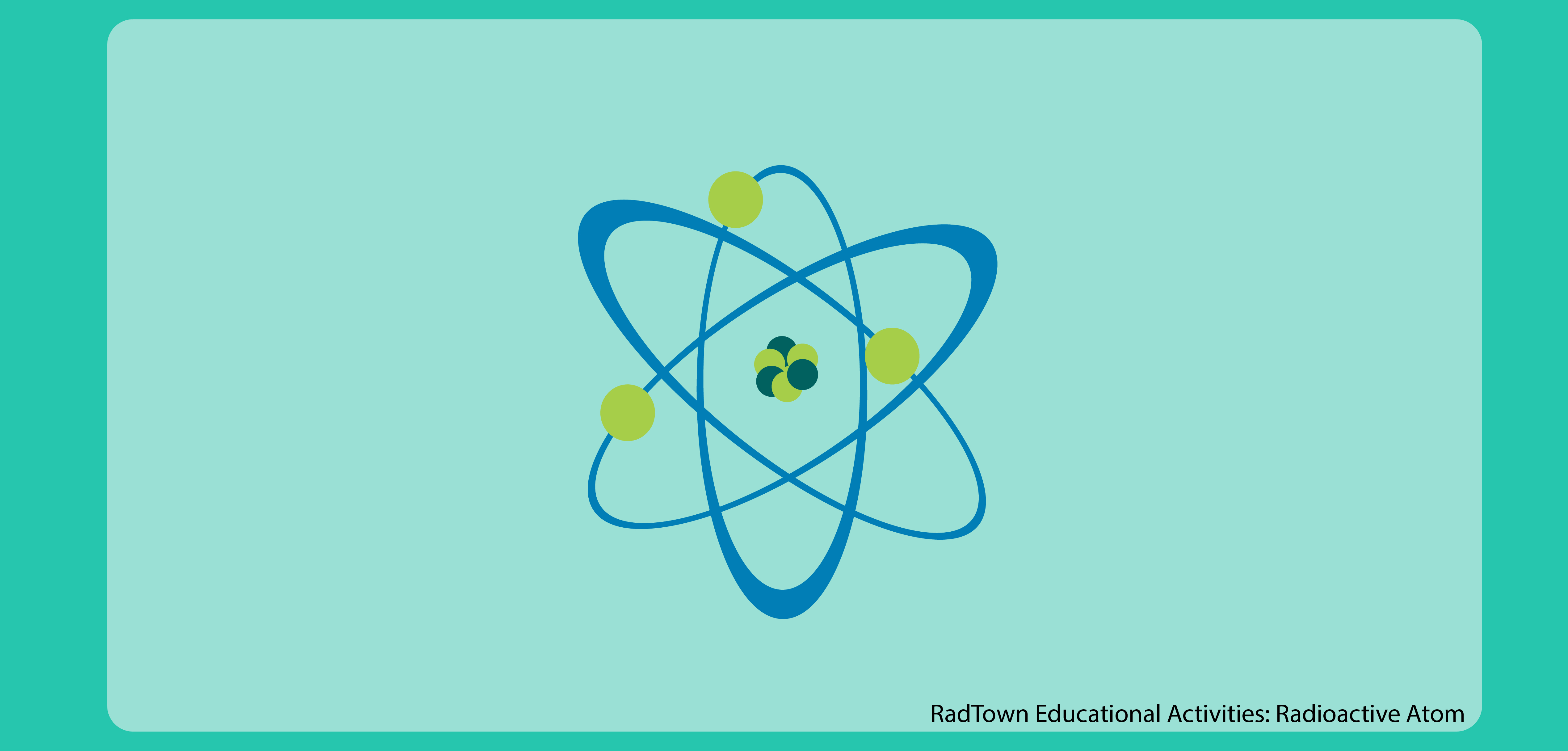RadTown Radioactive Atom: Vocabulary Activities
The concepts surrounding radiation can be complex. By conducting a vocabulary activity before beginning an activity or series of activities, students will have a shared base knowledge. This activity is intended for middle and high school students.
- Materials and Resources
- Vocabulary by Activity
- Activity Suggestions
- Common Core State Standards
- Printable Worksheets and Classroom Aids
Materials and Resources
Each italicized document title can be found at the bottom of this page, and is available for printing and distribution. Each italicized document title can be found at the bottom of this page, and is available for printing and distribution.
- RadTown Vocabulary Cards
- RadTown Glossary Flash Cards
- Materials noted in activity suggestions
Vocabulary by Activity
| Activity 1: Atomic Discoveries |
|
|
|---|---|---|
| Activity 2: Radon Vacuum |
|
|
| Activity 3: Strong Nuclear Forces |
|
|
|
Activity 4: Atomic Stability |
|
|
| Activity 5: Half-Life Data Sheet |
|
|
| Activity 6: Radioactive Decay Chain |
|
|
Activity Suggestions
Identifying images:
- Print the applicable images from RadTown Vocabulary Cards.
- Display the images around the room or spread them out in an open area on the floor.
- Pronounce the vocabulary words one at a time. NOTE: You can provide the definition of the given word at this time or after students have identified the words.
- Have students take turns identifying the words in an active manner. Suggestions include having students move to the correct image and identify it, use a flashlight to point to the correct image (safety reminder: never shine the light in another person’s eyes), drive a remote control car to the correct image, or throw a bean bag to land on the correct image.
Matching words and images:
- Print the applicable words and images from RadTown Vocabulary Cards.
- Give each student a vocabulary word or image. Options: Fold or ball up the copies and let each student select one. Have students trade their copy with another student once or twice. NOTE: You may need an even number of participants.
- Direct students to find the person with the matching word or image.
- Review the matches to confirm they are correct.
- Pronounce each word and provide a definition.
Spelling the words:
- Print the applicable words and images from RadTown Vocabulary Cards.
- Display the words and images at the front of the classroom.
- Pronounce each word and provide a definition.
- Conduct a spelling activity:
- Have students create a word scramble or word find activity; trade papers and complete the activity.
- Play spelling basketball. Divide the class into two teams. Pronounce a vocabulary word. Have a student (alternating between teams) spell or write the word on the board. Students that spell the word correctly are given an opportunity to shoot a basket (use a trash can) with a ball of paper (ball) from a designated distance (or varying distances for a different number of points). The team that scores the most points wins. You can have students provide a definition for extra points.
Creating definitions:
- Print the applicable words and images from RadTown Vocabulary Cards.
- Display the words and images at the front of the classroom.
- Pronounce the vocabulary words.
- Have students work in pairs or small groups to hypothesize and create a definition for each vocabulary word.
- Options:
- Direct one student from each pair/group to rotate and join another pair/group or have two pairs/groups join together. Direct the newly formed groups to compare their definitions and modify them if desired.
- Review each pair/group’s definitions, have students discuss what they agree/disagree with and confirm the accurate definition.
The concepts in this activity align with the following CCSS English Language Arts Standards for Literacy in History/Social Studies, Science, & Technical Subjects:
- CCSS.ELA-LITERACY.RST.6-12.2 Key Ideas and Details
- CCSS.ELA-LITERACY.RST.6-12.4 Craft and Structure
- CCSS.ELA-LITERACY.L.6-12.6 Vocabulary Acquisition and Use

